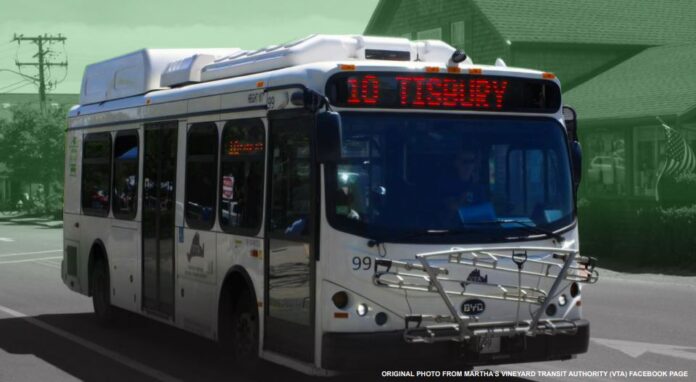MARTHA’S VINEYARD, renowned for its environmental stewardship and the eco-consciousness of its residents, is actively integrating electric vehicles (EVs) across its transportation network–a move closely tied to both its sustainability goals and its reliance on tourism.
The island’s natural beauty and environmental health are not just points of pride but essential economic assets, underpinning a tourism-driven economy that swells the population from around 17,000 to over 60,000 each summer. Protecting these resources is central to sustaining both the seasonal influx of visitors and the year-round community.
Martha’s Vineyard has set an ambitious goal of transitioning to 100% renewable energy by 2040, with transportation electrification as a cornerstone of this plan. The strategy includes not only electric cars but also ferries, buses, and the promotion of biking and walking as alternatives to traditional vehicle use. This comprehensive approach is supported by local initiatives, community engagement, and infrastructure investments.
The Martha’s Vineyard Transit Authority (VTA) operates the island’s public bus system, serving both residents and the 1.3 million annual visitors. The VTA has begun electrifying its fleet, aiming for a fully electric system in the coming years. These electric buses offer several benefits: zero operating emissions; reducing greenhouse gases and improving air quality; quieter, more comfortable rides; enhancing the visitor and resident experience; lower maintenance and fuel costs; and making the system more economically sustainable over time.
As for energy resilience, the buses are powered by locally generated solar energy, and the VTA is developing a microgrid to ensure reliable service even during power outages. By 2020, the VTA’s electric buses had already replaced 300,000 fossil-fuel miles, with the long-term plan projected to cut 36,000 tons of CO2 emissions over ten years.
While less than 5% of the island’s 27,000 registered vehicles are currently electric or hybrid, this percentage is slightly ahead of the Massachusetts state average. Progress varies by town, with up-Island communities like Chilmark and Aquinnah leading adoption rates. The island’s compact geography–average daily driving distances are just 19 miles–makes it well-suited for EVs, as most residents can easily charge vehicles overnight at home.
To encourage adoption, towns are installing free public charging stations and hosting events to familiarize residents with EV technology. Local leaders believe that as more residents make the switch, adoption will accelerate through community influence and increased visibility.
Electric bikes (e-bikes) are also gaining popularity as a sustainable, enjoyable way to explore the island. Companies like The Happyness Factor offer guided e-bike tours, providing both residents and tourists with a low-impact alternative to car travel. The island’s scenic roads and relatively short distances between towns make e-bikes a practical and attractive option for visitors seeking to reduce their carbon footprint while enjoying the landscape.
Martha’s Vineyard’s transition to electric transportation is a work in progress, with significant strides in public transit and growing momentum in private vehicle adoption. As infrastructure expands and community engagement deepens, Martha’s Vineyard is setting a model for how small, tourism-dependent communities can lead in the shift to clean transportation.





